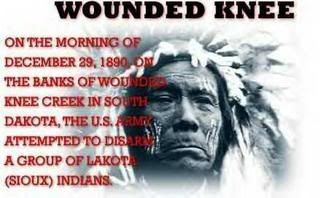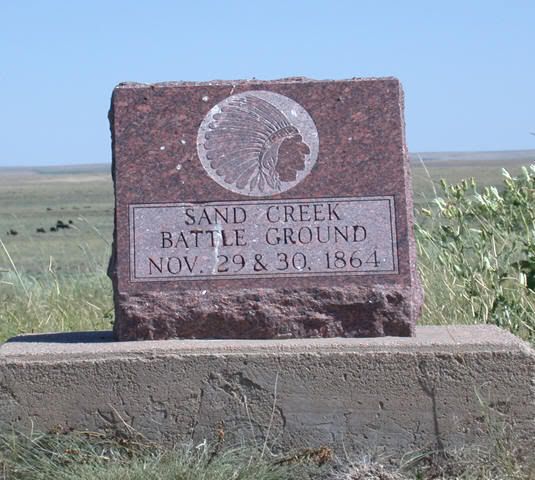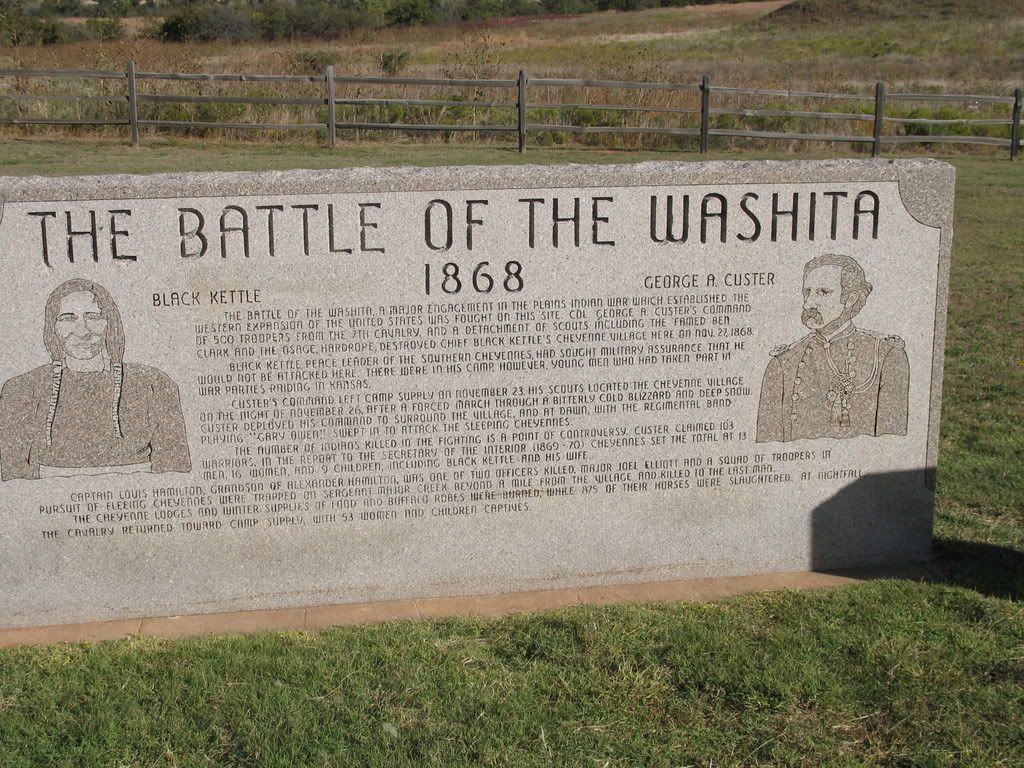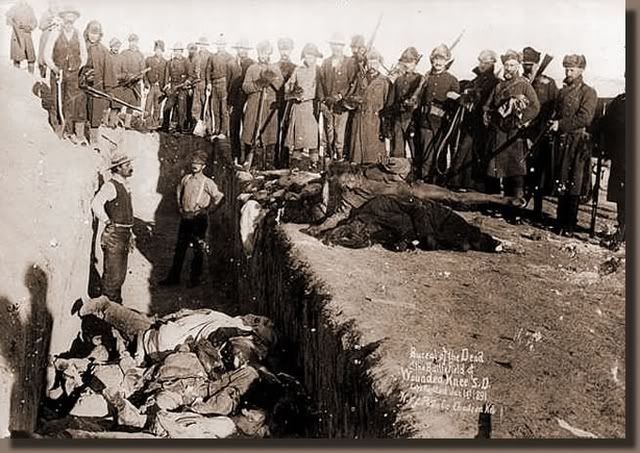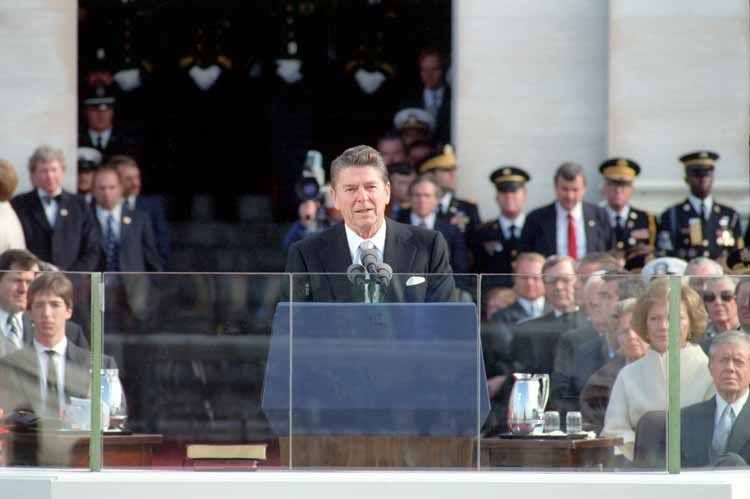For my first post at Progressive Historians, I thought it would be appropriate to talk about
actual, historical Progressives.
Once upon a time, a
Democratic President wanted to take us into war, and he was opposed by
Republican Senators. Not only did those Republican Senators oppose the war, they did it at a time when the press, both parties, and much of the electorate was in favor of going to
war. They did it even though one would be up for election the following year, and another
wanted to run for President. Not only that, they didn't listen to political consultants and
didn't apologize for or later try to obfuscate their positions. They didn't vote "Present".
They didn't 'flip-flop'.
Given what we've come to know in this age as the behavior of the two parties,Senators and Presidential aspirants, it sounds like a fairy tale, I know.
It isn't.
Democrat Woodrow Wilson won re-election in 1916 on the slogan "He kept us out of war", which he did, even though a German submarine had sunk the Lusitania and taken 127 American lives more than a year before the election. But by 1917, aided by several significant instances of German sabotage in the US and the "Zimmerman Telegram" that disclosed Germany was to resume unrestricted submarine attacks and encouraging a Mexican invasion of the US, and also to secure huge amounts of money loaned to the British and French by Wall Street, the national and political mood was turning toward favoring US entry into the European war.
In April, 1917, Wilson addressed Congress and asked for a declaration of war against Germany and Germany's allies. Senator LaFollette from Wisconsin took to the floor of the Senate to oppose a declaration of war - a war which was extremely popular nationally, and even in LaFollette's home state. Senator George Norris of Nebraska also opposed the war. Both Norris and LaFollette were Republicans, but Progressive Republicans.
The point of this exercise isn't to argue whether the US entry into World War One was justified or not. There is a lot of detail inLaFollette's and Norris' speeches (LaFollette's is here,
Norris' here) that discusses the actual issues surrounding the declaration of war. If you readLaFollette's speech in full, you may get the impression, looking back 90 years through the lens of large amounts of anti-German propaganda from WW I and WW II, thatLaFollette was sympathetic to the Kaiser. The Kaiser's Germany, for all its failings, was not Hitler's Germany.
I believe the case was that LaFollette was strongly anti-war and thought the British and Germans equally culpable, but Wilson was taking the side of the British, and LaFollette was answering that. LaFollette still favored Wilson's original position of strict neutrality, which by
April, 1917 had become a sham - he favored neither the British nor German sides.
What's more interesting to me is that LaFollette and Norris chose to vote and speak their conscience rather than choosing a course of political expedience or ambition, particularly in
light of the actions of Senators (especially Kerry, Edwards and Clinton) surrounding the Iraq
War Authorization to Use Military Force (AUMF) and their later votes and positions (which also include Obama's) regarding funding and conduct of the war. And what's eerily interesting is the similarity of some of the issues the early Progressives addressed and issues many Democrats failed to address regarding the AUMF and prosecution of the Iraq War.
LaFollette took the floor of the Senate on April 4th, 1917. After a brief introduction, he began the substance of his speech talking about the media's role in the run-up to war:
Quite another doctrine has been promulgated by certain newspapers, which unfortunately seems to have found considerable support elsewhere, and that is the doctrine of "standing back of the President" without inquiring whether the President is right or wrong. For myself I have never subscribed to that doctrine and never shall.
Later in the speech LaFollette came back to the same issue:
It is unfortunately true that a portion of the irresponsible and war-crazed press, feeling secure in the authority of the President's condemnation of the Senators who opposed the armed-ship bill, have published the most infamous and scurrilous libels on the honor of the Senators who opposed that bill. It was particularly unfortunate that such malicious falsehoods should fill the public press of the country at a time when every consideration for our country required a spirit of
fairness should be observed in the discussions of the momentous questions under consideration.
LaFollette, in his speech, performed a point-by-point rebuttal of Wilson's speech that asked for a declaration of war. Most of that is specific to the situation in 1917, but one other similarity caught my eye:
The President in his message of April 2 says:
The present German warfare against commerce is a warfare against mankind. It is a war against all nations.
Is it not a little peculiar if Germany's warfare is against all nations the United States is the only nation that regards it necessary to declare war on that account?
...
Norway, Sweden, the Netherlands, Switzerland, Denmark, Spain and all the great Republics of South America are quite as interested in this subject as we are, and yet they have refused to join with us in a combination against Germany.
LaFollette even argued that if a majority of the American people really supported going to war, as Wilson claimed (and LaFollette had cited thousands of letters and telegrams opposing US entry into the war), that a national referendum should be held to determine the course of action. He also pointed out that Wilson claimed to want to make the world "safe for democracy", but the
British and French governments we were siding with at that time had no interest in democracy in places like Ireland, India, Egypt, or North Africa.
Of course a declaration of war passed the Senate (we'll return to the fates of those who voted against war later). But LaFollette didn't give up his opposition to the war.
After war was declared, LaFollette fought against conscription (the draft), fought the passage of the Espionage Act and its censorship provisions, fought to force the government to clearly state the objectives of the war, and even attempted to force the expense of the war to fall on the rich and others who profited most from going to war.
In succeeding weeks, La Follette remained a tough opponent of the Wilson administration's program for war on the home front. When the president asked for an Espionage Act that would give him the right to censor newspapers, magazines and books, and send civilians to jail for criticizing the war, LaFollette fought the measure ferociously. He was able to persuade the Senate to reject direct censorship of newspapers by a presidential board but the rest of the measure was voted into law.
World War I's Forgotten Hero - Thomas Fleming
As mounting domestic oppression sent more and more anti-war activists to jail, La Follette emerged as their defender, berating his colleagues with the charge that "Never in all my many years' experience in the House and in the Senate have I heard so much democracy preached and so little practiced as during the last few months."
About Robert "Fighting Bob" La Follette - John Nichols
On August 11, 1917, [LaFollette] introduced a War Aims resolution that called on the US to declare definitely its strategic goals, to condemn the continuation of the war for the purposes of territorial annexation, and to demand that the Allies restate their peace terms immediately." This position was attacked by both the press and public officials.
Robert M. LaFollette, Sr.
Five months after war was declared, LaFollette gave a speech opposing the war in Minneapolis in which he repeated his assertion that the Lusitania was carrying arms and munitions - contrary
to our stated neutrality. The Wilson Administration would not allow LaFollette access to information that would either prove or disprove his claim - exploration of the Lusitania's wreck in recent years has proved him correct. But in reporting the speech, the AP misquoted LaFollette, and a subsequent NY Times headline screamed "LaFollette Defends Lusitania Sinking".
What he had said was
that while America had "suffered grievance…at the hands of Germany" they were not sufficient to provoke war. "I say this, that the comparatively small privilege, of the right of an American citizen to ride on a munitions loaded ship flying a foreign flag, is too small to involve this government in the loss of millions and millions of lives!!" He insisted that the President knew there was ammunition on theRMS Lusitania but hadn’t prevented Americans from boarding it.
Robert M. LaFollette, Sr.
From there, the Mighty Wurlitzer of the time cranked up and the tune it was playing was "Villify LaFollette".
The day after the speech, Secretary of State Robert Lansing released to the newspapers the text of an intercepted message that Germany's ambassador had sent to Berlin before America declared war, asking for $50,000 to influence Congress. The timing of the release was hardly accidental. Newspapers splashed it across their front pages, implying that LaFollette was Germany's hired mouthpiece. The secretary of state, satisfied with the damage he had done, blandly admitted he had no hard evidence connecting any federal legislator with German propaganda.
A movement was soon underway to expel La Follette from the Senate. The Democratic governor of Wisconsin staged a mass meeting in Madison, at which Secretary of the Treasury McAdoo, President Wilson's son-in-law, called La Follette a traitor. That same day, Secretary of State Lansing denied the American government knew the Lusitania was carrying ammunition. The Senate's Privileges and Elections Subcommittee announced it would hold public hearings on the senator's possible expulsion in December ...
The hate campaign against La Follete mounted in ferocity. Life, in those days a humor magazine, published a "Traitor's Number" featuring La Follette receiving the iron cross from the Kaiser. Another set of cartoons showed Satan inducting La Follette into the "Traitor's Club," with Judas Iscariot, Benedict Arnold and other members eagerly welcoming him.
Fleming, op. cit.
The very progressive and liberal University of Wisconsin, with strong political support from LaFollette, had served as a Progressive think tank since LaFollette's election as Wisconsin's governor in 1900, and did so into the 1940s, but -
In his home state La Follete endured humiliations that wounded him deeply. Various clubs expelled him. The state legislature passed a joint resolution accusing him of sedition. The faculty of the University of Wisconsin voted 421-2 to condemn his "unwise and disloyal utterances." A saddened LaFollette noted in his diary that "my picture was taken down from where it was hanging in all of the university buildings." His son Phil, a student at the university, had to endure face-to-face insults and sneers.
Fleming, op. cit.
Finally, on October 6th, 1917, LaFollette was allowed to defend himself on the Senate floor. Senate leadership manipulated the timing so that LaFollette would have little time to rebut subsequent speakers, and in fact he was never allowed to rise again in the Senate to rebut accusations against him.
LaFollette began his speech by rising on a point of personal privilege. The entire speech can be found here: Free Speech in Wartime. Once again, many of the points that LaFollette addressed in this speech seem applicable to the last six years. He cited extensively Henry Clay, Abraham Lincoln, and others who had supported the right to criticize the government during wartime (in the case of the two cited, the war at issue was the Mexican War).LaFollette again criticized the media:
Since the declaration of war the triumphant war press has pursued those Senators and Representatives who voted against the war with malicious falsehood and recklessly libelous attacks, going to the extreme limit of charging them with treason against their country.
As one example of the vitriol and hatred directed at Senators opposing the war, he cited an AP article that quoted Judge Walter T. Burns, US District Court Judge, Texas, who named Senators he considered traitors - includingLaFollette - called for their indictment, and then went on Coulter-esquely:
"They ought to be tried promptly and fairly, and I believe this court could administer the law fairly; but I have a conviction, as strong as life, that this country should stand them up against an adobe wall tomorrow and give them what they deserve. If any man deserves death, it is a traitor. I wish that I could pay for the ammunition. I would like to attend the execution, and if I were in the firing squad I would not want to be the marksman who had the blank shell."
Foreshadowing opponents of the Iraq War being labeled as "hating America" or "objectively pro-Sadaam", LaFollette continued:
But, sir, it is not alone members of Congress that the war party in this country has sought to intimidate. The mandate seems to have gone forth to the sovereign people of this country that they must be silent while those things are being done by their government which most vitally
concern their well-being, their happiness and their lives. Today and for weeks past honest and law-abiding citizens of this country are being terrorized and outraged in their rights by those sworn to uphold the laws and uphold the rights of the people.
...
It appears to be the purpose of those conducting this campaign to throw the country into a state of terror, to coerce public opinion, to stifle criticism, and suppress discussion of the great issues involved in this war.
Citing the separation of powers and advocating action Congress refused to take - both then and now - he went on:
Mr. President, I believe that if we are to extricate ourselves from this war and to restore this country to an honorable and lasting peace, the Congress must exercise in full the war powers intrusted [sic] to it by the Constitution.
...
No war can be prosecuted without money. There is no power to raise the money for war except the power of the Congress. From this provision alone it must follow absolutely and without qualification that the duty of determining whether a war should be prosecuted or not, whether the people's money shall be expended for the purpose of war or not rests upon the Congress, and with that power goes necessarily the power to determine the purposes of the war, for if the Congress does not approve the purposes of the war, it may refuse to lay the tax upon the people
to prosecute it.
By the time LaFollette spoke, the nation already had - by Constitutional Amendment - enacted an income tax. LaFollette wanted progressive taxation, and moreover, wanted to tax war profiteers who benefited enormously from the war:
And yet today, Mr. President, for merely suggesting a possible disagreement with the administration on any measure submitted, or the offering of amendments to increase the tax upon incomes, or on war profits, is "treason to our country and an effort to serve the enemy".
...
We have not yet been able to muster the forces to conscript wealth, as we have conscripted men, but no one has been able to advance even a plausible argument for not doing so.
After the speech, LaFollette backed off somewhat in his war opposition - perhaps because of the attacks on him and his ability to function as a Senator, perhaps because of his son's serious illness. Certainly the kinds of attacks thatLaFollette faced were probably on the minds of Democratic Senators who supported the AUMF - but it's as likely that LaFollette, who by 1917 had served 3 terms in the House, 3 terms as governor of Wisconsin, and 11 years in the Senate, was equally aware of what to expect. He noted as much in the beginning of his speech opposing the declaration of war; he wasn't deterred.
More of a concern for those Democratic Senators voting for the AUMF might have been the effects on their future political prospects, especially campaigns for the Presidency. Six Senators, including LaFollette voted against the declaration of war. Oddly, Sen. William Stone of MO died a little more than a year after his vote, and Sen. Harry Lane of OR was dead less than two months after his vote against the declaration.
Senators Asle Gronna of MN and James Vardaman of MS (an avowed white supremist and lynching supporter) lost their bids for re-election.
But George Norris and Robert LaFollette were the most outspoken opponents of the declaration of war. Norris faced re-election in 1918, and went back to Nebraska to campaign.
Based on his feelings that pro-war sentiment was being promoted by big business, he voted against U.S. entry into the conflict. For this act of conscience he was vilified throughout the nation and at home. He returned to Nebraska to confront his critics. When he addressed Nebraskans he said simply, "I have come home to tell you the truth," and honestly explained his feelings and beliefs. After his address, Nebraskans responded with respect and enthusiasm for his honesty and they again returned him to the Senate.
Senator George Norris State Historic Site
Norris served in the Senate until defeated for re-election in 1942.
LaFollette was up for re-election in 1922. In 1921, preparing to announce his candidacy, his advisors told him, as consultants do today, to backpedal on his war opposition and minimize his stand on the issue, which had probably cost him considerable political support in Wisconsin. He might have apologized for his vote, as some Senators do, or tried to obfuscate his position. Instead,
La Follette began his speech with the formalities of the day, acknowledging old supporters and recognizing that this was a pivotal moment for him politically. Then, suddenly, LaFollette pounded the lectern. "I am going to be a candidate for reelection to the United States Senate," he declared, as the room shook with the thunder of a mighty orator reaching full force. Stretching a clenched fist into the air, La Follette bellowed: "I do not want the vote of a single citizen under any misapprehension of where I stand: I would not change my record on the war for that of any man, living or dead."
Nichols, op. cit.
No apology, no "I was against it before I was for it", no obfuscation.
LaFollette not only won re-election - in 1924, LaFollette stood as the Progressive Party nominee for the the Presidency, a third-party candidate. He took 17% of the national vote (a share unmatched by a third-party candidate until Ross Perot), won Wisconsin's electoral votes, and placed second in the balloting in 11 western states. LaFollette had first attempted a run for the Presidency in 1912, but was forced out by Teddy Roosevelt, so it was probably a consideration that was in his mind too when he chose to vote his conscience and oppose the war.
What both Norris and LaFollette had going for them, despite opposing the war based on conscience and in contradiction of the majority of the electorate in their respective states, was that both were effective Progressives. That meant that when in office they had long-championed causes that mattered to their constituents, they had opposed both corporate influence and self-enrichment, and had long-established records as both honest public servants and effective politicians.
It was enough for them to withstand the full force of the media, the Democratic Party, the Stalwart wing of the Republican party, and even condemnation by "Progressives" like Teddy Roosevelt and others. Neither Norris nor LaFollette were "purists" in any sense of the word - both valued accomplishment more than a dogmatic or ideological stance, but both had limits on the flexibility of their principles that went far beyond winning the next election.
Moreover, neither man's legacy suffered. LaFollette died in 1925 and was replaced in the Senate by his son, Robert M. LaFollette, Jr., who served until defeated by Joe McCarthy in 1946. His other son, Phillip, served a number of terms as Wisconsin governor. Both sons ran as Progressives, and in fact during the 1930s, most of the Wisconsin Congressional delegation was made up of Progressives. A grandson was later elected WI Attorney-General, and even the
current WI Secretary of State is a LaFollette (though not related, as far as I know) - both now Democrats, as the GOP no longer has room for Progressives.
In 1957, Sen. John F Kennedy chaired a committee to select five great Senators whose portraits would hang in the Senate reception room. The committee's first three picks were easy - Henry Clay, John Calhoun, and Daniel Webster. To balance a more liberal pick, the committee chose conservative Ohio Senator Robert Taft.
The committee's first choice for the remaining portrait was George Norris of Nebraska, but the then-sitting Senators from that state - ultra-conservative Republicans Roman Hruska and Carl Curtis - let it be known they would block that pick. Instead, the committee chose Robert LaFollette, Sr.
In 1964, only two Senators opposed the Gulf of Tonkin resolution that greatly expanded US involvement in the VietNam War. One was Sen. Wayne Morse of OR, who was born in WI the year LaFollette was first elected governor, grew up in a WI household that supported Progressives, and graduated from the University of Wisconsin in 1923.
The other was Sen. Ernest Gruening of AK. In 1924, when LaFollette ran for President, Gruening, then a journalist, was the campaign's spokesperson and director of publicity.
Of the 23 Senators who opposed the AUMF, one was Ron Wyden of OR, often cited as Wayne Morse's protege, and another was Russ Feingold of WI, whose father had been active in the Progressive movement, and who cited LaFollette in his campaigns for the Senate.
While I'll support the Democratic nominee for President, none compare to Norris or LaFollette - either in their actions with respect to the Iraq War, nor in their overall records in office, nor, in my estimation, in their principles or political courage.
Call me an idealist - or call me a Progressive.
Labels: badger, First World War, Progressives












 WHAT: First (annual?) ProgressiveHistorians Meetup at the AHA
WHAT: First (annual?) ProgressiveHistorians Meetup at the AHA